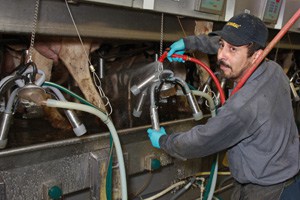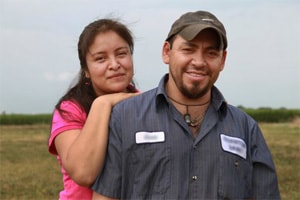OCTOBER 2016
 Have you ever changed your behavior because of a research study you came across on the radio or in a magazine? Perhaps you you started an exercise program to control weight to prevent diabetes. Research is translated into practice when scientific discoveries are pushed out into the real world for communities, individuals, and organizations to adopt, adapt, and use to improve their lives.
Have you ever changed your behavior because of a research study you came across on the radio or in a magazine? Perhaps you you started an exercise program to control weight to prevent diabetes. Research is translated into practice when scientific discoveries are pushed out into the real world for communities, individuals, and organizations to adopt, adapt, and use to improve their lives.
Research to Practice (R2P) has gained more attention in recent years among those involved in health-oriented research. The Upper Midwest Agriculture Safety and Health (UMASH) Center strives to promote R2P and disseminate scientific research discoveries through our outreach program. This includes assisting our pilot study grant recipients to disseminate not only their research findings but also the agricultural health and safety resources produced as part of their projects.
Research to Practice (R2P)
Translation of research happens through sharing and promoting evidence-based information, knowledge, skills and training.
The Seguridad en las Lecherias project is an example of a UMASH research project that translates researchers’ findings in a way that the community can use. This project started with the creation of a 5-module health and safety training curriculum for Latino immigrant dairy workers in Minnesota and Wisconsin. The curriculum was developed with the input from Ag Extension, Health and Safety professionals, researchers, trainers, workers, and farmers. Researchers designed this curriculum considering cultural relevance for immigrant workers. According to project staff, there was virtually no existing safety training programs addressing this population. The researchers tested the curriculum with 836 immigrant workers on 67 farms. Results suggest an increase health and safety knowledge and improved farm safety behavior. Additionally, workers were very happy to have the training. As one worker put it “I’ve worked here 7 years and never learned how to work safely around cows.”
 This worker safety training was only part of the project however. The research team was also interested in what would happen if they went beyond simply trying to increase knowledge. So on several of these farms, in addition to receiving the dairy safety training curriculum, they worked with the farmer to select and train a worker to serve as a community health worker or a Promotor de Salud: A worker on the farm to directly help their co-workers by reminding them to use proper safety procedures, to answer questions and to serve as liaisons between the farmer and farm workers. These sites were then compared to other farms that only received a one-time training.
This worker safety training was only part of the project however. The research team was also interested in what would happen if they went beyond simply trying to increase knowledge. So on several of these farms, in addition to receiving the dairy safety training curriculum, they worked with the farmer to select and train a worker to serve as a community health worker or a Promotor de Salud: A worker on the farm to directly help their co-workers by reminding them to use proper safety procedures, to answer questions and to serve as liaisons between the farmer and farm workers. These sites were then compared to other farms that only received a one-time training.
While the research team is still analyzing their data, initial findings show that farms with onsite safety Promotores are, over all, successful in creating change. Farmers and workers feel the model has helped improve safety on the farm. A worker who participated in the Seguridad project stated that “it’s projects like this that could help push that along so we become more professional and that it becomes our culture [of] safety.”
Currently, Liebman and her research team are interpreting their findings and exploring ways to make the project sustainable – the difficult part of translating scientific discoveries to real-world community applications. The team has already received requests for their training curriculum from over 40 organizations from throughout the US as well as from other countries. They are engaged in conversations with other organizations to host the training modules for the long run to ensure they continue to be publicly available. The team recognizes the importance of their work; but it will only be truly impactful when the information and skills are successfully disseminated throughout the dairy farming community. A Seguridad-trained worker said it best: “Research is important. Otherwise, you don’t have a clue how to do something….We know safety is a problem on the farms. Without any research, how do we attack it and make it better?”
